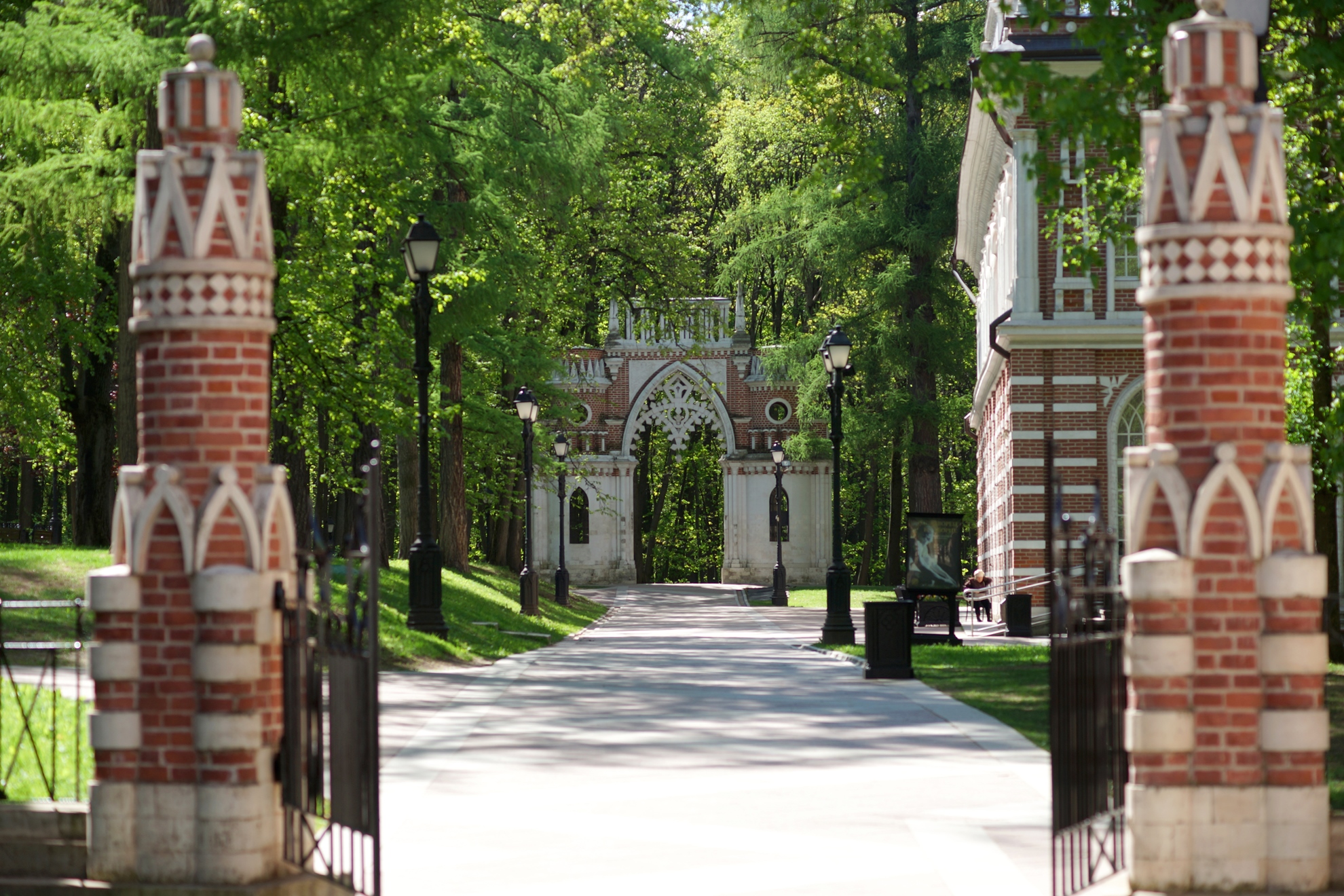History
Tsaritsyno Park is an example of great landscape architecture of the 18th and 19th centuries. Even at the time when the estate was owned by the princes Cantemirs, in the second half of the 18th century, an extensive garden and park were built, already with landscape architecture elements.
In addition to income from the gardens and greenhouses, the Cantemirs also cared about the outlook of the park. At the pond they beautified the shores and created artificial islands, ravines were fortified with trees and a gazebo was built on the top the pyramid-shaped hill, which provided the best views. On the other side of the estate a regular park with a flower garden and bosquets was laid out with three paths and an avenue built in the shape of a fan.
Ponds, ravines and gardens charmed Catherine the Great and in 1775 she purchased the estate to build her country residence. During Catherine’s reign an English gardener Francis Reed was invited, who started working on Tsaritsyno’s English Landscape Park.
Reed greatly expanded the territory of the park and gardens, partially using the elements of the Cantemers’ park. Its regular part was preserved, while the fruit garden was removed. The park gradually turned into a landscape park. Additional walking paths were organized, most of them survive till this day. Morning Trail along the water was arranged and when the main buildings were constructed in the 1800’s-1810’s, they stood next to this trail. But with the death of the Empress, all the construction and park works stopped.
Tsaritsyno Park was neglected during the reign of Paul I, but was revived under the leadership of Petr Valuyev, who was also in charge of the Kremlin. Overgrown park was once again put in order and the water system of the ponds was restored. Sergei Makhov and Karl Ungebauer, a German gardener, took care of the park, based on the system already established by Francis Reed and his ideas. Makhov organized the Great Lawn, while Ivan Yegotov, a student of Bazhenov and Kazakov, played an important role in creating the park’s general outlook.
Based on drawings from Kazakov’s albums, park architecture elements were created: pavilions, bridges, entrance gates and small architectural forms. Apart from the gardens and greenhouses, Karl Ungebauer laid out new paths in the park and built grottoes. But with the onset of the war of 1812, funding for these works dried out. For some time the work continued at a languid pace and then stopped altogether with the resignation of Petr Valuyev
At the end of the 19th century the park began to turn into a forest as practically no one took care of it. The park’s complete reconstruction was carried out only in 2005-2007.
Tsaritsyno Park’s peculiarity is that it’s home to the burial mounds of the Vyatichi tribe dating from the 11th/12th centuries. The most complete archaeological excavations were implemented in 1944. Archaeologists discovered a number of interesting items, including various tools of labor, which until then had not occurred in similar mounds of the Moscow Region. The findings of the researchers were subsequently transferred to the Tsaritsyno Museum and laid the foundation for its archaeological collection.

